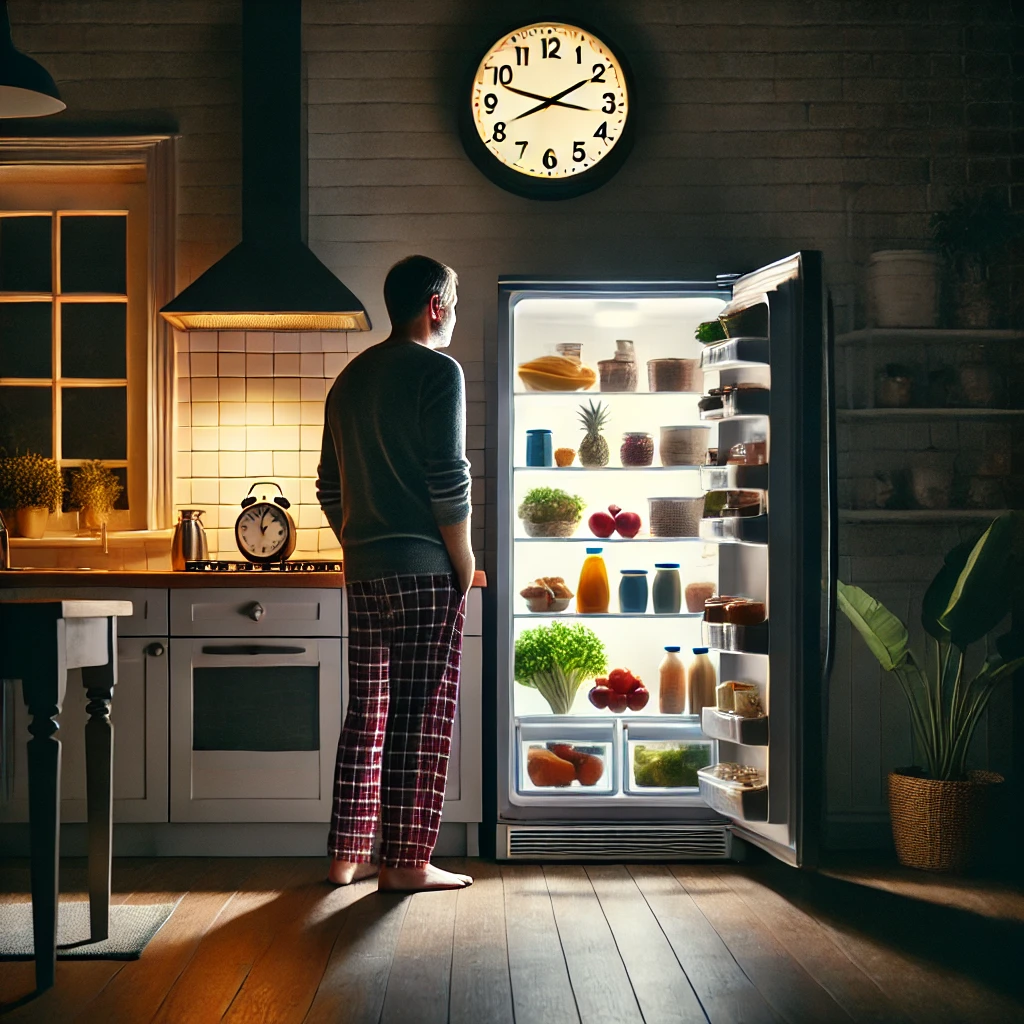Introduction: Deciphering the Date-Time Culinary Phenomenon
On the seemingly ordinary night of February 9, 2021, at specific times like 2:15:09 AM and again at 4:24:03 AM, something curious can be observed in the world of culinary habits. These timestamps, perhaps ordinary at a glance, may represent quintessential moments of late-night cravings—a phenomenon experienced by many but seldom explored in depth. This article aims to delve into these moments, exploring what drives our nocturnal snacking and how it reflects broader eating patterns.
The Enigma of “9 Feb 2021 2:15:09 / 4:24:03 Food”
What do these specific times signify in the context of food? It’s intriguing to consider these as peak moments when hunger strikes unexpectedly, pushing people towards their kitchens. Could there be a pattern or a reason behind these cravings occurring at such precise times?
The Allure of the Midnight Kitchen
Midnight cravings are not just about hunger; they’re often about comfort, habit, or even boredom. The kitchen becomes a beacon of solace where one can find a brief escape from the day’s stresses or the night’s stillness. This section explores the psychological and emotional triggers behind midnight kitchen visits.
Decoding Our Nocturnal Palate: The Science Behind Nighttime Eating
Scientifically, several factors influence our predilection for late-night snacking. From hormonal changes to circadian rhythms, our bodies play a complex symphony that sometimes nudges us towards the refrigerator after hours. This part will examine how biological and environmental factors contribute to this behavior.
Odd-Hour Hunger: Why Does It Happen?
Ever wondered why you feel a pang of hunger just when the world seems to be at its quietest? This segment will delve into the physiological and psychological reasons that can trigger hunger cues at unconventional hours, providing a deeper understanding of our body’s internal clock.
9 Feb 2021 at 2:15:09 and 4:24:03: Insightful Moments in Our Dietary Habits
Reflecting on the eating patterns specific to the early hours of 9 feb 2021 2:15:09 / 4:24:03, provides a fascinating snapshot into how modern lifestyles influence our dietary habits. These timestamps, perhaps captured from data or anecdotal observations, might indicate peak times when many of us succumb to these cravings.
Modern Lifestyle and Night Eating
Today’s 24/7 lifestyle where people binge-watch shows, engage in late-night work sessions, or scroll through social media contributes significantly to disrupted sleep patterns and consequently, to eating at unconventional hours. The availability of food, with 24-hour delivery services and ready-to-eat meals, supports and perhaps even encourages this behavior.
Cultural Shifts in Eating Habits
Culturally, the boundaries of meal times are also evolving. Snacking or eating at any hour has become more normalized in many societies, supported by a shift towards more flexible daily schedules in urban environments.
The Body’s Response to Altered Patterns
From a biological perspective, eating at irregular hours when the body expects to rest can have repercussions on digestion and overall health. It raises questions about how these patterns affect our long-term wellbeing, such as impacts on metabolic health, weight, and sleep quality.
Embracing a Balanced Approach
Understanding why we eat at odd hours isn’t just about curbing the habit but about integrating healthier practices that align with our modern needs. This includes setting consistent meal times, limiting light exposure before bed, and choosing snacks that are satisfying yet beneficial to our health if nighttime eating is unavoidable.
The Delights of Midnight Snacking: Everyone’s Favorite Late-Night Treats
What are the most popular go-to snacks during these late hours? This section will explore the variety of foods people gravitate towards, from the healthy to the indulgent, providing insights into our collective comfort foods.
Your Preferred 2 AM Snack: A Personal Tale
Inviting readers to reflect on their own choices, this part will discuss the diversity in midnight snack preferences. It also encourages a look at how these choices fit into broader dietary patterns—do they disrupt them, or do they seamlessly blend in?
Ethical and Sustainable Nighttime Eating: A Responsible Approach
As we consider our late-night dietary habits, it’s also important to think about how they align with sustainable and ethical eating practices. This section will offer suggestions on how to align midnight snacking with a more conscious approach to consumption.
Concluding Thoughts: A Nighttime Nourishment Narrative
In conclusion, the exploration of these specific moments on 9 feb 2021 2:15:09 / 4:24:03 food opens up broader discussions about our relationship with food, the timing of our eating patterns, and how they relate to our health and lifestyle. Understanding these patterns can help us make more informed choices about our diet and well-being.
FAQs
What is the significance of the times 2:15:09 and 4:24:03 on 9 Feb 2021?
These specific times are used to highlight moments when people might experience late-night cravings or engage in nighttime eating. They serve as examples to explore why some individuals feel compelled to eat at odd hours.
Why do people feel hungry during these specific late-night hours?
Hunger at these odd hours can be due to a variety of factors including disrupted sleep patterns, hormonal imbalances like fluctuations in ghrelin and leptin, psychological factors such as stress or boredom, and environmental influences like exposure to blue light from screens.
How does modern lifestyle influence eating at these times?
Modern lifestyles that include irregular sleeping schedules, nighttime use of electronic devices, and 24/7 access to food can disrupt natural eating rhythms and lead to increased snacking at unconventional hours.
Are there any health implications associated with eating at these times?
Eating at odd hours, especially late at night, can disrupt digestive processes and impact sleep quality. Over time, it may also contribute to weight gain and metabolic disturbances if it becomes a regular habit.
How can one manage or reduce late-night cravings?
To manage or reduce late-night cravings, try establishing a regular sleep schedule, avoiding heavy meals and stimulating activities before bed, reducing blue light exposure in the evening, and opting for light, healthful snacks if eating at night is unavoidable.
What are some healthy snack options for late-night cravings?
Healthy late-night snacks might include a small bowl of whole-grain cereal with milk, a piece of fruit, yogurt, or a handful of nuts. These options are satisfying yet light enough to minimize any disruption to sleep or digestion.


